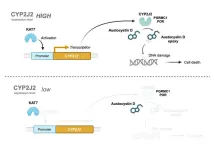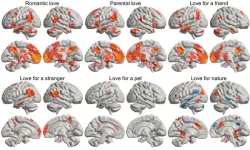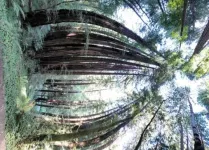Austocystin D, a natural compound produced by fungi, has been recognized for its cytotoxic effects and anticancer activity in various cell types. It exhibits potent activity even in cells that express proteins associated with multidrug resistance, attracting significant global research interest. Austocystin D promotes cell death by damaging their DNA, a process which might be dependent on cytochrome P450 (CYP) oxygenase enzymes. Notably, austocystin D has shown significant activity against cancer cells with increased CYP expression. However, the specific role and function of the CYP2J2 enzyme in the cytotoxicity of austocystin D remain to be determined.
Against this backdrop, a team of researchers from the Tokyo University of Science in Japan has successfully unveiled the mechanism of action of austocystin D involving CYP2J2. The research team included Ms. Yukiko Kojima and Professor Mahito Sadaie, both from the Department of Applied Biological Science, Faculty of Science and Technology, Tokyo University of Science, Japan, among others. They employed an innovative research approach that combined genetic silencing techniques with growth inhibition assays in cell line models. Their pioneering findings were published online in the journal Cancer Science on July 15, 2024.
Initially, the researchers utilized data from the Japanese Foundation for Cancer Research 39 to analyze the correlation between austocystin D sensitivity and CYP expression in cancer cells. By analyzing gene markers in these cells, they found that the expression of one particular CYP gene, namely CYP2J2, positively correlated with sensitivity to austocystin D. Furthermore, Sadaie and his team validated their findings through correlation studies, using 11 human osteosarcoma (OS)-bone cancer cell lines, which confirmed the association between CYP2J2 expression levels and austocystin D sensitivity.
To unravel the underlying mechanism of action of austocystin D, the researchers employed U-2 OS cells, which express elevated levels of CYP2J2. They observed that the U-2 OS cells treated with austocystin D exhibited significant DNA damage, whereas HOS (bone cancer) cells with lower expression of CYP2J2 were less sensitive to the compound. Prof. Sadaie credits the unified efforts of the researchers for the discovery of the CYP2J2 mechanism and shares, "This research work was a collaborative project involving the Department of Applied Biological Science, Tokyo University of Science, and Dr. Ishikawa's team from Kyoto University, Dr. Shin-ya’s team from the National Institute of Advanced Industrial Science and Technology, and the teams of Dr. Dan and Dr. Tomida from the Japanese Foundation for Cancer Research, Japan."
Furthermore, the researchers conducted a series of experiments to analyze the effects of overexpression and depletion of CYP2J2 on austocystin D-mediated cytotoxicity. Their results confirmed that overexpression of CYP2J2 enhanced the cytotoxic effects of austocystin D, while its depletion resulted in reduced sensitivity to austocystin D and significantly less cytotoxicity in cancer cells.
To further understand the gene sets involved in mediating the functions of CYP2J2, the team utilized CRISPR-Cas9 technology. They identified POR and PGRMC1 as two prominent genes that regulate CYP2J2 and induced the cytotoxicity of austocystin D. Additionally, genomic sequencing data revealed that lysine acetyltransferase 7 (KAT7) upregulated and promoted the transcription of CYP2J2. These findings provide crucial evidence supporting the CYP2J2-dependent cytotoxic activity of austocystin D.
“We are hopeful that our novel findings on austocystin D and its association with CYP2J2 can lead to the development of safe and effective therapeutic agents for patients with cancer, especially those with high CYP2J2 expression levels,” says Prof. Sadaie, outlining the potential applications of their research.
In summary, the natural fungal compound austocystin D holds the potential to become a game-changing drug in the fight against cancer.
***
Reference
Title of original paper: Cytochrome P450 2J2 is required for the natural compound austocystin D to elicit cancer cell toxicity
Journal: Cancer Science
DOI: https://doi.org/10.1111/cas.16289
About The Tokyo University of Science
Tokyo University of Science (TUS) is a well-known and respected university, and the largest science-specialized private research university in Japan, with four campuses in central Tokyo and its suburbs and in Hokkaido. Established in 1881, the university has continually contributed to Japan's development in science through inculcating the love for science in researchers, technicians, and educators.
With a mission of “Creating science and technology for the harmonious development of nature, human beings, and society," TUS has undertaken a wide range of research from basic to applied science. TUS has embraced a multidisciplinary approach to research and undertaken intensive study in some of today's most vital fields. TUS is a meritocracy where the best in science is recognized and nurtured. It is the only private university in Japan that has produced a Nobel Prize winner and the only private university in Asia to produce Nobel Prize winners within the natural sciences field.
Website: https://www.tus.ac.jp/en/mediarelations/
About Professor Mahito Sadaie from Tokyo University of Science
Mahito Sadaie serves as a Professor in the Department of Applied Biological Science, Faculty of Science and Technology, Tokyo University of Science, Japan. He received his Ph.D. from Tokyo Institute of Technology, Japan and has been actively involved in research since 2002. He specializes in cancer biology, molecular biology, cell cycle, drug discovery, and epigenetics, among other fields. Over the years, he has published 21 scientific papers in highly reputed journals that have been cited over 2800 times.
Funding information
This work was supported by P-DIRECT from MEXT and AMED; MEXT KAKENHI (Grant Number JP19H05655) and AMED (Grant Number JP20cm0106113) to F.I.; JSPS KAKENHI (Grant Number JP20K07037) and research support from the Yamada Science Foundation and Kobayashi Foundation to M.S.
END







